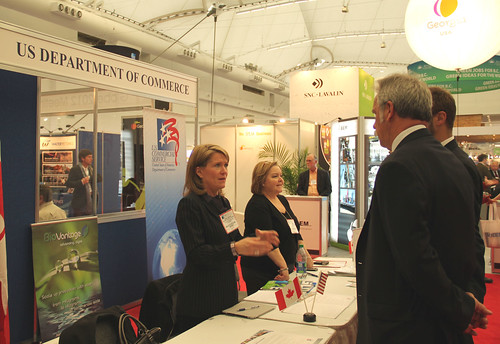With today signifying the real impact of commuters and Olympic goers, an estimated 35,000 commuters a day will see their journey home disrupted during the Games as the transport network juggles the needs of ordinary Londoners and Olympic spectators.
Despite smooth operations so far one of the biggest obstacles facing employers and commuters is business disruption as the city faces its first major test of combining weekday commuter traffic with a full day of Olympic events.

Image by Alexander Kachkaev / Flickr
Around 5.5 million visitors are expected every day and gridlock can inevitably be expected throughout the UK’s roads, rail networks, rail networks and waterways, potentially impacting supply chains throughout the country.
Preparing well in advance should help to minimise the impact of the weeks of disruption this summer and prevent this stressful time from damaging the customer relationships you may have spent years developing. In fact, as with most business risks, there is potential to turn the Games into an opportunity.
If you are seen by your customers to be taking the initiative and planning in advance to minimise the impact on their business, it could strengthen your relationship with them. With the Olympic and Paralympic Games only just arrived it’s not too late to put in place a 5-point remote working strategy:
- Be creative – Launch a pilot programme in your organisation. Start with one or two departments or a set period of weeks (the Olympics could be an ideal time) and monitor results against set targets.
- Develop criteria – Get a good remote working policy in place. Generally, the adoption of remote working involves building the minimum appropriate infrastructure – hosted solutions, or financial software such as IRIS Exchequer installed and hosted in secure scalable data centres. Tools could include remote control applications, collaboration software and video conferencing software. It may be easier to reach team members via the web than walk around the office.
- Technology – Ensure that you choose a hosted service that includes the on-going management of the servers, software and data including the provision of backup services, installation of security patches and various levels of technical expertise and support.
- Communication – create a schedule for regular communication. Use instant messaging and video chatting for spontaneous conversations to ensure that staff don’t miss out on ‘the real world’.
- Metrics – It’s well known that when staff work from home they are happier, free from office distractions and often more productive. However what about staff that need supervision? Rather than monitoring hours worked per day, set production targets or goals to be completed.
The Olympics could be used as a springboard towards a much more widespread four-day office week with either staff working from home, doing compressed hours, or going part-time. A move that not only will help employers cut costs and ease the strain on commuter rail and roads (and ultimately the tax payer who funds their repair) but to help ease the pain of tough economic times. Perhaps then we will finally discover that remote working really can be a win-win.
About the author: Paul Sparkes is Product Director at IRIS Exchequer, a mid-market business and finance management solution that has received a number of awards over the years. Awards success includes winning ‘Financial Software Provider of the Year’ in the Real Finance/CBI FDs’ Excellence Awards 2012, 2011, 2008, 2006 and 2005.
IRIS Exchequer was named the ‘Best rated accounting product catering for businesses in the medium range’ in an authoritative survey by the ICAEW (Institute of Chartered Accountants in England and Wales), the industry body which also accredits IRIS Exchequer.




